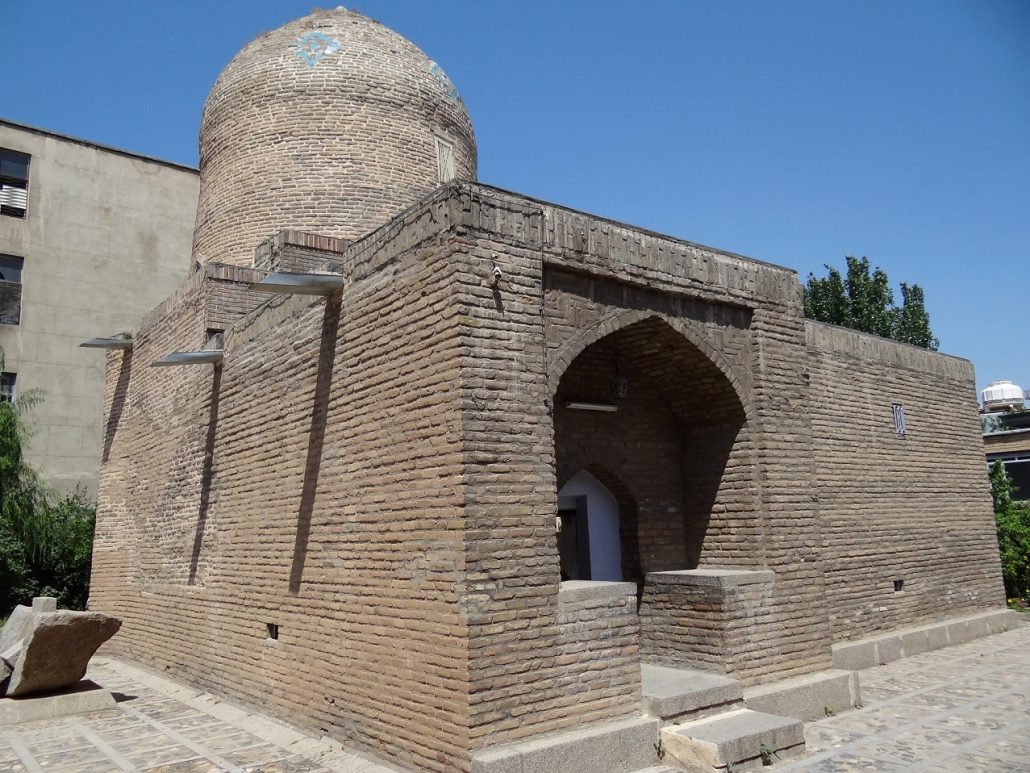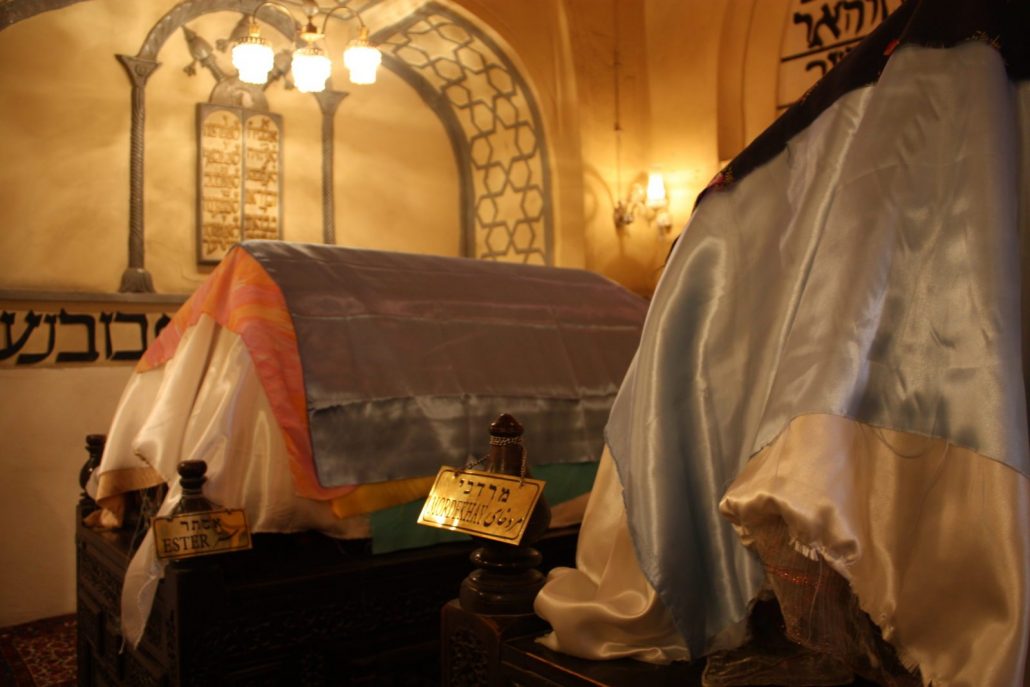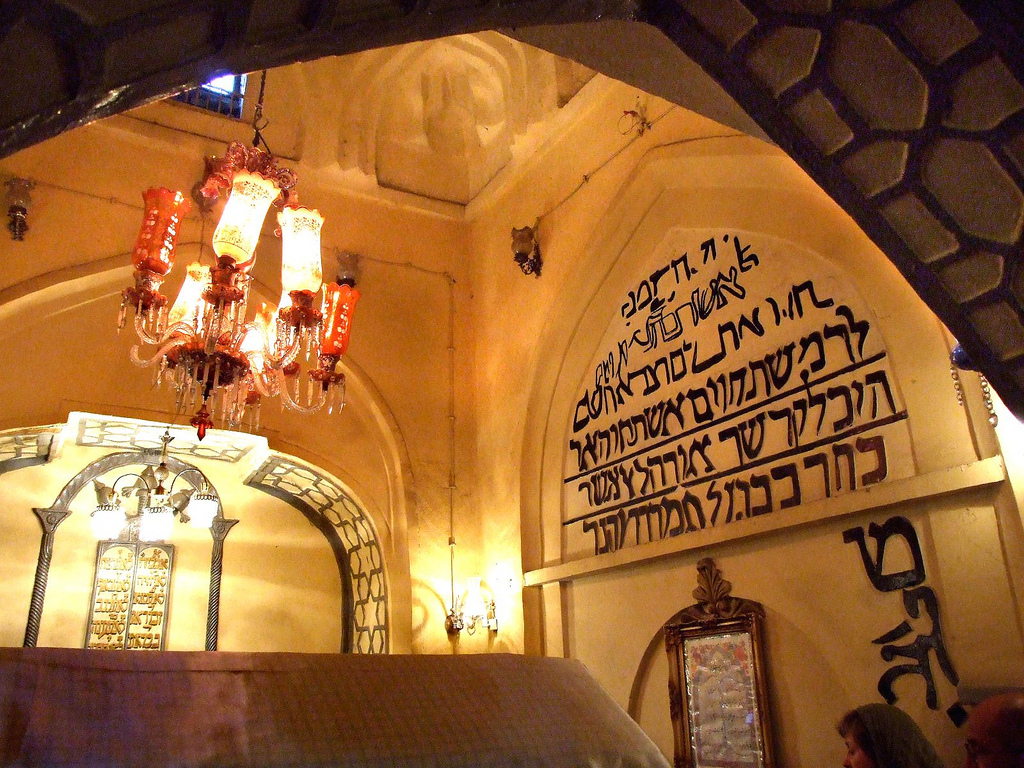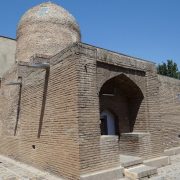Tombs of Esther & Mordechai

Tomb of Esther and Mordechai
The pivotal Biblical event of the period of the Babylonian Captivity was the marriage of a Jewish girl named Esther to the Persian Emperor Ahasuerus. Because of her influence with the Emperor, an attempt to slaughter of all Jews in Persia was narrowly averted. The would-be perpetrator of the genocide, the Emperor’s advisor Haman, was put to death, and the Jews were permitted to return to their homeland as subjects of Persia. Despite the miraculous events wherein Esther probably saved the majority of her people, she was not destined to ever see the Promised Land again. For the rest of her life she remained by the side of Ahasuerus, along with her uncle Mordechai, who became one of the Emperor’s closest advisors.
Esther probably died around 500 BC, and was buried in the city of Hamadan along with her uncle. Later, when the Jews were permitted to return to Palestine, many decided to stay in Hamadan, in part due to their loyalty to Esther, but also because many had become quite settled in their new homes there. For the next twenty centuries, the Jewish communities of Persia and Mesopotamia remained among the largest and most influential in the world. After the final dispersion of the Sanhedrin Communities in Judea in the 4th century AD, the Jewish leaders of Persia became the defacto supreme arbiters of Jewish law and practices.

Inside View of Tomb of Esther and Mordechai
The Jews of Persia remained an important cultural and religious presence in the Islamic east until the 19th century, when they at last began migrating back to the west, a process which has greatly accelerated in the second half of the 20th century. While the surviving Jewish population of Iran is now very small, the Mausoleum of Esther and Mordechai remains the pilgrimage center of the Iranian Jewish community.

Shrine of Esther and Mordechai
The Shrine of Esther and Mordechai is a relatively small structure marked by a domed tower. Although it appears much older due to its extremely simple and austere architectural style, the shrine only dates back to the 13th century. An arched, late Persian-style entrance is a giveaway to the shrine’s builders and true age.
The tombs of Esther and Mordechai are clearly much older, and are marked by a pair of large stones similar to the types that sealed off graves in ancient Israel and later Judea. Inscriptions in Hebrew identify the two tombs as those of Esther and Mordechai .



